|
Taking gamified elements from reality television shows and bringing them into the classroom is a wonderful way to create magical learning in your classroom. There are so many brilliant ideas that can be adapted to our learning environments to create amazing and immersive experiences for our students. One of my favorite sources of inspiration is the Food Network television show, Cutthroat Kitchen. This cooking show hosted by Alton Brown, features four chefs that compete in a 3-round elimination cooking competition. At the start of the show, each chef is given $25,000. In each round, chefs have the opportunity to bid on auction items to sabotage one another. The person left standing at the end of the competition keeps whatever money he/she has not spent in the auctions. Inspired by this entertaining reality show, I decided that the Friday backed up to Spring Break was a great opportunity to try something new with my restless students who have been hit hard with a case of Spring Fever. With a refrigerator full of leftovers begging to be used and a shorter schedule than normal, I decided a quesadilla would be the perfect item for the challenge. Let the games begin! I arrange all of the available items on my counter, with a message projected on the screen that says, "Are you ready for Cutthroat Kitchen?" As students came in, I have them go directly to their kitchens with their teams to get washed up and ready. When the final bell rings, I hand out $1,000 play money to each team and explain the rules: Teams have 20 minutes to prepare a quesadilla using the ingredients gathered. Every 5 minutes throughout the challenge, an auction item will be up for bid that will allow you to sabotage other teams to increase the challenge to your opponents. Teams who have the best quesadilla's evaluated on taste, texture, appearance, and creativity will earn XP (experience points). Additionally, teams that had the most money left, will get bonus XP and a Chance Card that will give advantages within our gamified class structure. Gathering Ingredients After I explain the rules, teams send 1 person to gather ingredients from the supply table within 30 seconds. Staple ingredients kept in their kitchens like flour, sugar, salt, pepper, and oil could be used in the challenge, but nothing else once they returned from the supply table with their ingredients after the 30 second is up. Auction Item #1 Before the the challenge begins, I auction off the first item up for bid; mini utensils. The team who bids highest can choose two teams who must trade in all of their kitchen utensils for mini plastic utensils for the duration of the competition. Teams receiving this sabotage may not use any other utensils including knives and cheese graters. Any teams caught using a standard utensil, will be eliminated from the challenge. I start the auction at $100 and bidding continues until highest bidder is unchallenged. The winner of the auction item is given the Auction Item Box and hands the utensils to the team of choice. The Race is on! After the mini utensils have been passed out, I start the clock for 20 minutes and say GO! Teams race to prepare their quesadilla within the 20 minute window. Immediately I witness the 4 C's in action! Creativity, Communication, Critical Thinking, and Collaboration are amplified as students are challenged by time and numerous obstacles that come their way. Auction Item #2 After 5 minutes, it's time to release auction item #2. I lift up the second box that holds oven mitts. Teams who bid highest in this auction, will choose two teams to wear oven mitts on both hands the duration of the competition. I once again start the auction at $100 and the teams start their bidding. I hand the highest bidder the box and they decide which teams will be the lucky recipients of the oven mitts. I love listening to students strategize and communicate to decide which teams to give them to.
Auction Item #3 10 minutes into the competition, item #3 is released. This item doesn't come in a box Teams that bid highest in this auction will choose two teams that will be unable to talk for the duration of the challenge. Once again, students strategize to decide which team will lose this valuable form of communication. Auction Item #4 The last auction item comes with 5 minutes left in the challenge. This sabotage gives highest bidder the ability to take one ingredient from any 2 teams in the room. With little time to spare, this sabotage could really put a team at a disadvantage with so little time remaining. Now teams are really jumping in and bidding to avoid this costly sabotage. Time is UP! When the 20 minute timer goes off, all hands go up and preparation is complete! Each team brings their dishes to the judges table to be evaluated. I invite former students or staff members to evaluate the dishes based on taste, texture, appearance, and creativity. Teams that score the highest earn 1000 XP, 2nd place 750 XP, and 3rd place 500 XP. Teams also earn chance cards as well. Teams with the largest sum of money at the end of the game will earn 500 bonus XP as well as a Chance Card that is drawn out of a box to earn special game advantages. Learning Amplified! This incredibly fun challenge amplified creativity, collaboration, critical thinking, and communication to epic proportions and is one that I will definitely try again. The challenges and auction items that could be used, is limitless. There are so many ways that you could incorporate and reinforce skills not only in the culinary classroom, but to other content areas as well! I'd love to hear your ideas! How could you use the gamified strategies of Cutthroat Kitchen in your classroom?! Share with me on Twitter at @tishrich and follow our classroom adventures at #culinarySMHS .
13 Comments
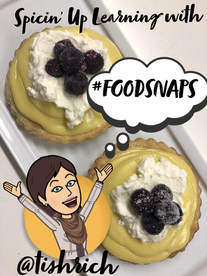 When Tara Martin took education by storm with her #booksnaps post on Dave Burgess’ Teach Like a Pirate website over a year ago, I was HOOKED! I loved the idea of making learning and thinking visible by snapping pictures of what I was reading and adding bitmojis, emojis, thought bubbles, and text! Talk about powerful reflection! I began creating my own #booksnaps of what I was reading and immediately found myself making deeper connections to the text and retaining what I learned. My mind started spinning….this may be the answer to a puzzle I had been trying to solve! I was determined to find a way to adapt this amazing idea into my culinary world? In Culinary Arts, reflection time is sometimes difficult. In my hands-on Career and Technical Education class, students are preparing amazing culinary creations on the daily. I build in time to evaluate and reflect on learning at the end of the class period, but the reality is….sometimes we run out of time. Learning is messy...literally. With dishes to clean, counters to sanitize, and floors to sweep, the ending of class can be rushed. There isn’t always enough time to taste the food and give valuable feedback. This was a problem. When students make amazingly delicious food, what do they want to do? Eat it, of course! It would be cruel and unusual punishment to make them wait to eat it until the next day. So it made me think.... My students love taking pictures of their food and posting it to Snapchat and Instagram! How cool would it be if they created #foodnaps of their finished products while their learning was still fresh in their minds and posted them to a Padlet!? We could look at them the next day and evaluate together as a class! I had a good feeling this was the answer I was looking for! I couldn’t wait to get my students foodsnappin’ the next day. I created a Padlet with columns for each period and shared the link on my daily announcement in our Google Classroom. As I gave students instructions for the day’s lab, I explained we were going to reflect a little differently. I mirrored my phone to our AppleTV, gave them a quick tutorial, and showed them how to upload their pictures to Padlet. Of course, most already Snapchatted anyway, so they immediately caught onto the idea and couldn’t wait to start snappin! There are so many things I love about reflecting with #foodsnaps! Flexibility. Time is of the essence in Culinary. Not every team finishes at the same time. One false move during the lab, and it can set a team back 10 or more minutes. Some students finish their creations with time to spare, and others are running out the door in a frenzy as the bell rings. Flexible reflecting allows some students to complete their #foodsnaps during class if there is time, and others can wait till they get home and have time to process. Personalized Reflection. I love that in a class where students are collaborating in teams to create, they have an opportunity to personalize their creations with bitmojis, emojis, backgrounds, and text. It also allows for them to reflect individually on their learning; making connections to past recipes they’ve made or food they’ve eaten. Speaks their Language. As my friend Tara says, “let’s speak in a language that kids understand”. Students were already speaking in “Snapchat” language and sharing their pictures of food with friends and family, why not use this in a deeper and more meaningful way to reflect on learning! Global Connections. One way we’ve taken #foodsnaps to another level this year is by sharing our learning through global collaborations. Brandi Miller’s 1st grade class in Auberndale, Florida has partnered with ours to experience a little piece of culinary with us. I have shared the link to our #foodsnaps Padlet and her students vote on their favorite with the star feature! My students love to share their creations with these first graders, and the first graders love to take part in the learning by voting on their favorites. Attach Recipes. With the link feature in Snapchat, students can upload their recipes! Not only do they have a visual representation of their learning, but with resources attached! Students can also upload sketchnotes and other resources they've created for their learning. Here is a quick video tutorial of how to create a #foodsnap... Get Snappin!
If it wasn’t for #booksnaps, this idea wouldn’t have been born. Check out @TaraMartinEDU’s website, for many resources for creating #booksnaps not only on Snapchat, but also Google Slides, Seesaw, Google Draw, and more! Also, follow @TaraMartinEDU on Twitter and join in the #booksnaps community! Would love to see your #foodsnaps on Twitter! Don’t have a culinary class? Take pictures of your own culinary creations. Also, #booksnaps have lots of cousins! How could you use this powerful form of reflection in your world?!  One of my favorite ways to document my learning during a conference is to sketchnote the sessions and keynotes with visual images and text. It’s something that I truly look forward to. This past week I went to the Spring CUE conference in Palm Springs, CA and once again, I thoroughly enjoyed sketching the keynotes and sessions I attended. I have found I am able to focus better, make deeper connections to the ideas, and retain the information longer when I allow my thoughts to fill the page with images and text. However, as one of the last sessions was coming to a close, I looked at my sketch and realized something. Though, my page was filled with images and text, there was very little color or detail. That’s because it wasn’t complete. My favorite part of sketchnoting comes after the session....the beauty comes in the reflection. At times I am able to reflect immediately after the learning and other times it happens later as I fly home or decompress from the experience in my pajama’s in the living room. It doesn’t matter when it occurs, but it always does. This past week, as I settled into the airport after going through security I pulled out my ipad pro and opened up Paper53 to look at my sketchnotes from the week. With each quote I read and image I saw, the memories from each session came flooding back and I began to process. I rewrote some of my text, added in images, wrapped some of my thoughts in containers and bubbles, and colored. As a person who recharges in solitude, the act of coloring and creating is therapeutic for me. It brings me back to being a kid sprawled out on my bedroom floor with my big box of crayons and a coloring book. Coloring between the lines and adding my own unique details to the page, allowed me to process the day. It gave me time to untangle all of my complicated thoughts and ideas and organize them into manageable chunks. This is exactly what happens when I reflect on my sketches. I am able to take the new ideas and content, connect it to prior knowledge, and sort it out into manageable chunks of information that are meaningful and actionable. I also find that taking the time to make my sketches visually appealing, brings me joy. Like a photograph, it captures a memorable moment in time that I want to revisit. When I teach sketchnoting to my students I also share the importance of the reflection time. I tell them to not worry so much about adding color and detail when they are documenting their learning. If it helps them focus, do it. However, if it distracts them from making connections and focusing on what they are learning, wait until after. I always try to carve out a minimum of 10 minutes for students to process what they sketch, add details, color, and ask questions of those around them to fill in missing information or make sense of what they recorded in their notes. I have found that my students really appreciate this time. Just as I do, they find this time of reflection to be valuable for connecting and sorting their new ideas and organizing them into chunks that are meaningful and actionable. For some students, they want to complete their sketches at home in solitude….I allow this too. Sometimes I think people feel that if they can’t draw images, text, color, and make it beautiful before the learning is over, sketchnoting isn’t for them. I thought this too at first. However, I know now that this just isn’t how I process. I need time to reflect, sort, organize, and color. My sketchnotes have evolved over time as I’ve developed my own style and flow. The more I sketch, the more I love it and appreciate how valuable it is to my learning. I also find it's a way for me to give back to those who have shared their heart and passion as well as share to those who were unable to take part in the experience. Here are some of my finished sketchnotes from #CUE18 that I completed on my flights home. It was an honor to capture the amazing presentations from my friends @taramartinEDU @jmattmiller and @julnilsmith in a sketchnote. Here's an example of one I started when watching an episode of The Great British Bake-Off with my students today. You can see I've added some text and images, and a little color, but haven't finished yet. To learn more about sketchnoting, follow the amazing @heckawesome and @mospillman. They are wonderfully supportive and always sharing out amazing blogs, vlogs, and challenges.
 Today I bundled up and headed out for a morning run. Most often I’ll cue up my favorite podcast and learn while I run, but today I knew I needed to shut off my mind and just go. I reminisced about my college days running on the cliffs of Point Loma, California with my Discman blaring Counting Crows and James Taylor. People knew me as the “girl who runs”. Running has always been therapeutic for me, a way to run off the stress of life, reflect, and re-energize. My body craves it, and yet I have not always prioritized it in my life. It’s easy to do what’s comfortable, even though we know it may not be what’s best for us. As I was running this morning, I began to think of the scary leaps ahead of me in my educational journey. I feel like I am standing at the door of a plane ready to dive head first into the unkown. I know it will be exhilarating and awesome once I make the leap, but right now I stand breathless and paralyzed. All of my past insecurities and fears come flooding back as my mind wants to focus on all the “what ifs” when I should be thinking of the “whys”. Moments like this are humbling. I am a risk taker. I love trying new things and pushing the boundaries of what’s possible. I continue to leap, because I’ve experienced the value and the exponential growth it has brought. However, this did not happen overnight. It took one leap, then another, and another, until taking leaps in learning became natural. Looking back, my past leaps seem small, however, at the time they seemed really big...jumping out of an airplane BIG! As I share about risk taking and pushing past the boundaries of what’s possible, I need to remember how scary some leaps are for people and though they may seem like small leaps to me, to others they are ENORMOUS! We all have our fears and insecurities and what is comfortable for me may be paralyzing for someone else and vice versa. In fact to some, leaping out of a plane isn’t scary at all! I am lucky to have encouraging people in my life. I have an amazing husband and family that cheer me on and dear local and PLN friends that give unexpected words of encouragement just when I most need it, reminding me of my “Why”. It’s amazing to know that others believe in you; cheering you on and ready to celebrate not only when you land, but when you jump! I want to be that same kind of encourager to others, always remembering how scary leaps can be. I want to cheer loudly and celebrate extravagantly the leaps of my colleagues and PLN as well, just as others have done for me. Today I reflect on my past leaps and how much I’ve grown from each one. Each risk has brought exponential growth, and I know that those to come will be no different. Sometimes we need to look back on how far we've come to give us courage to keep moving ahead in our journey. I am encouraged in my educational journey by the words of so many that I highly respect: “Being overwhelmed can lead to so much doubt. But even as I struggle with doubt from time to time, I’ve learned not to allow it to take root in my life. The way to beat it is to surround yourself with others who will remind you that you matter, that your work matters, and that you are making a difference” -Adam Welcome #KidsDeserveIt “We are each uniquely designed and have strengths that are specific to us as individuals. It’s like the beads in an old-school kaleidoscope toy; no two combinations are ever equivalent.” -Tara Martin #REALedu #BookSnaps “You can offer no finer gift or higher honor to the world than to find out what your drum is and then play it for all it’s worth.” -Dave Burgess #TLAP "You may feel like you have nothing to say, but you do have a story to tell” -George Couros #InnovatorsMindset “You don’t have to go as fast as everyone else, find your own rhythm.” -Dan Tricarico #TheZenTeacher “Perhaps not everyone can change the world, but everyone can make a positive influence in the world and in the lives of those around them. -Jennifer Casa-Todd #SocialLEADIA “Life is all about leaving a legacy” -Michael Matera #XPLAP Grab your parachute and take the leap!
Cheer on and celebrate others that are leaping too! We all need to have people that believe in us! 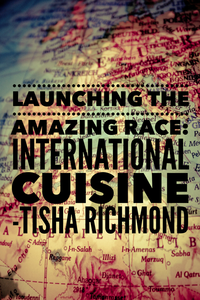 This past week, The Amazing Race: International Cuisine was launched in Culinary Arts 3! With a refined game structure and new game mechanics, I am confident it will be the most AMAZING season yet! There are plenty of twists and turns to keep teams on their toes and we have some global collaborations in place that are already taking this game to another level! Game Inspiration My inspiration for my theme is the reality television game show, The Amazing Race that has been airing for 30 seasons on CBS. In this show, teams of two race around the globe competing with other contestants to get to each destination “Pit Stop” first. Contestants arriving first get special prizes and game advantages and last to arrive is eliminated from the race. As teams travel to various locations around the world, they are unlocking the clues provided at route markers in each leg that lead them to the next destination. Some clues direct them to perform a task that are related in some manner to the country wherein they are located or it’s culture. In each leg, teams are eliminated until three remain and vie to reach the the final destination first. Game Plan I used the basic game structure and mechanics of this popular television show to create my own culinary version. This is my basic game plan, however there are sure to be plenty of surprises along the way in our amazing race adventures! Teaming up! Before the game launch, students form teams and create names and promotional video trailers. Spending a few days doing this allows students to bond with new team members before the race begins. I love the laughter, fun, and creativity that went into the creation of each of the team names and their video productions. Game Launch! On game day, students come in to The Amazing Race theme song playing in the background. I have 8 tables set up with a Chromebook and an envelope labeled, "Route Information". Projected on the screen it says, “Get ready! The first leg of The Amazing Race is about to begin! 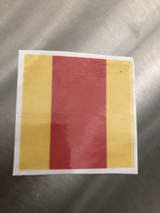 I tell students that when the clock starts, they are on a race to find their first route marker. They need to open the envelope revealing three images and figure out what location they all have in common. Once they determine that location, which is Lyon, France, they must run to find it on the globe I have at the front of the room. If they guess correctly, they will be handed another envelope that contains another clue. This clue is an image of a famous restaurant in Lyon. They have to locate the image in Google Maps and in Street View find the man in the red chef’s coat. This man holds the first route marker! When teams show me the man in red, I hand them a laminated route marker that is numbered with the place they arrived (ie. 1, 2, 3, etc.) Selecting Countries!
Once all teams have received their route markers, it is time to select their countries! I tell them this first leg of the race will be Europe! I have chosen 4 countries in Europe that they will be choosing from to research and prepare a dish for. Four weeks from now when we arrive at the Pit Stop, teams will be presenting what they’ve learned and a dish they prepared from that country for an authentic audience of local chefs and staff members. The name of each country is on a 3x5 card with the word “entree” or “dessert”. To keep things exciting, I also wrote "Wild Card" on one card. If a team chooses the “Wild Card” they can select anywhere in Europe that they’d like. Starting with the Route Marker #1, teams in consecutive order select their country & meal category. This will be the country that they will be researching for leg 1 of the race! The Amazing Race is off to an EPIC* start! Stay tuned, many more exciting adventures in The Amazing Race to come! Follow us on #culinarySMHS for race updates! *I was informed by my son today that the word EPIC was outdated and laughable. I say... it’s making a comeback! |
Tisha RichmondStudent Engagement & PD Specialist in Southern Oregon, Canva Learning Consultant, Canva Education Creator, and author of Make Learning Magical. I'm passionate about finding innovative ways to transform teaching and create unforgettable experiences in the classroom. |
- HOME
- SPEAKING
- ABOUT ME
- BLOG
-
RESOURCES
- Memorable Beginnings >
- Authenticity & Agency
-
Gamified Experiences
>
- Anywhere Learning Plans
- The Amazing Race Game Plan Resources
- The Race to the Golden Ticket
- Ready Player One
- The Amazing Food Truck Race
- The Great Interior Design Challenge
- The Final Table Challenge
- Challenge Rubrics
- Challenge Ideas
- Kitchen Utensil Race & Other Variations
- Code Names for the Classroom
- Badges
- Innovation
- Creativity, Curiosity, and Collaboration
- Authentic Audience
- Legacy
- Make Learning Magical Book
- PODCAST
- T-SHIRTS
- YOUTUBE
-
RECIPES
- Workshop & Session Resources
- Dragon Smart Reviews
Proudly powered by Weebly







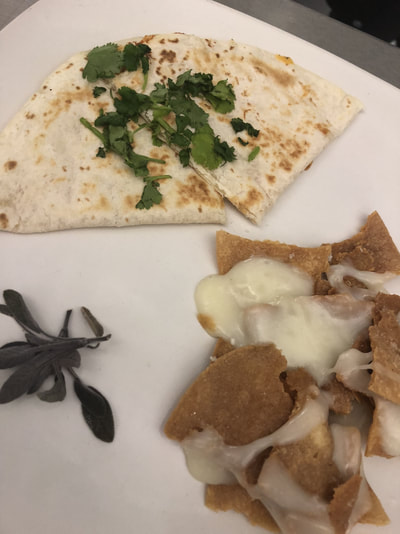
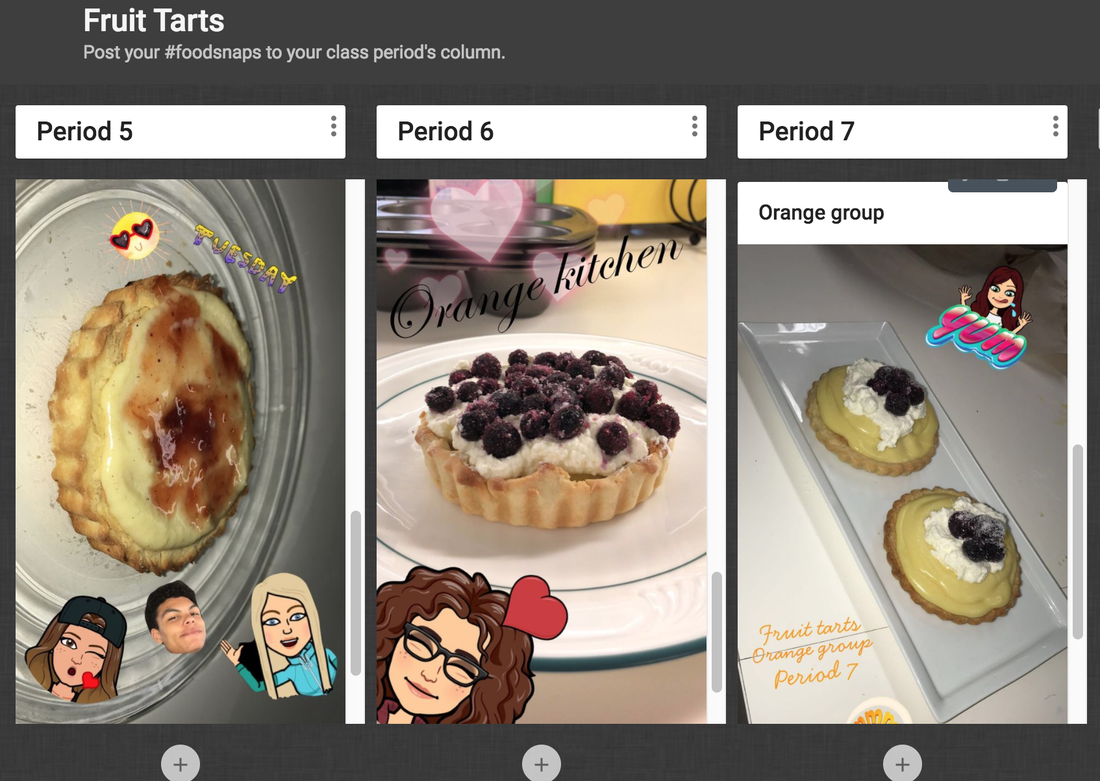

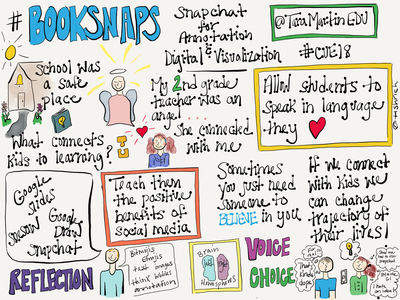
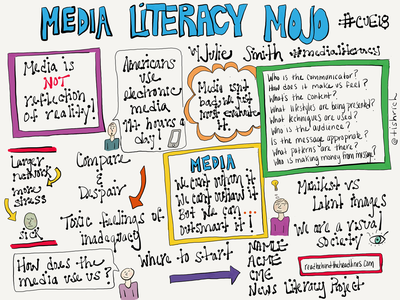


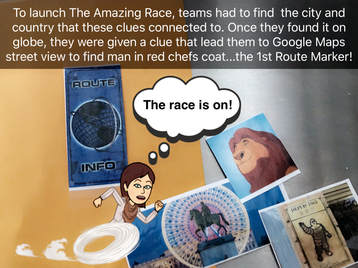


 RSS Feed
RSS Feed